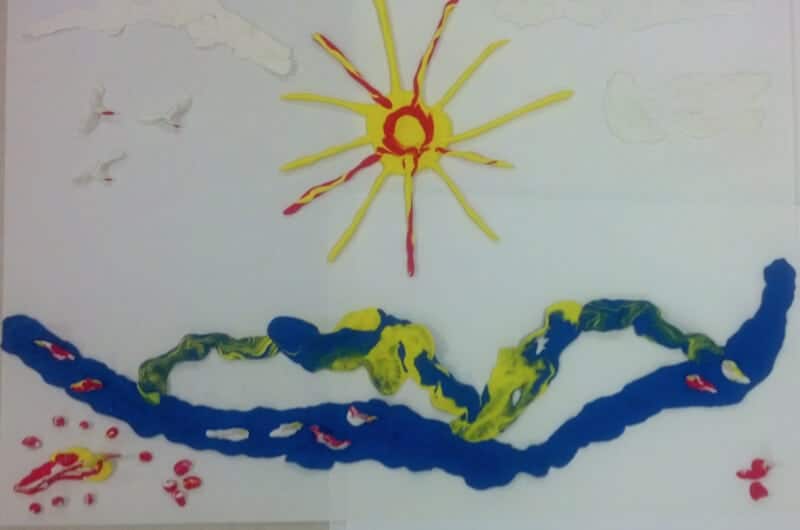Before your next difficult task, it might be a good idea to make a little art, a new study found.
Research by Girija Kaimal, EdD, assistant professor, and Kendra Ray, a doctoral student, both in Drexel’s College of Nursing and Health Professions, showed that just about 45 minutes of free art-making in a studio attended by an art therapist was enough to increase a person’s self-efficacy — a term used to describe a person’s confidence in themselves and their ability to complete tasks.
“What we were able to show was that within a short period of time, people felt differently about themselves,” Kaimal said. “There was a shift in self-perception for most of the participants, and this shift was not by chance.”
For their study published in Arts & Health, Kaimal and Ray had 39 participants, aged between 18 and 59, make art for roughly 45 minutes in an art therapy studio. Each participant was free to use markers, modeling clay and collage materials to create whatever they wanted. An art therapist present was allowed to help out if the participant asked for it. That therapist was also allowed to talk with the participant if they were engaged by them.
Before and after the art-making, participants took a 10-question survey designed to measure self-efficacy. It featured statements such as, “I am confident that I could deal efficiently with unexpected events” and “I can solve most problems if I invest in the effort,” and each statement could be answered by four responses ranging from “Not at all true” to “Exactly true.”
According to Kaimal, 73 percent of the participants showed a beneficial increase in their feelings of self-efficacy after completing their art.
“I was surprised to see that a session as short as 45 minutes could result in a shift in self-perception,” Kaimal said.
The key, she believes, is the “supportive, non-judgmental creative space” provided by art therapy. Without feeling pressure, the innate confidence of those creating art was allowed to blossom.
In addition to boosting participants’ confidence in their own abilities, Kaimal and Ray found that the 45-minutes of art-making was linked to significant increases in positive affect (a psychological term for feelings), as well as decreases in negative affect.
It appeared that the benefits of art therapy are universal. Even with a 41-year spread in the ages of the participants, the study found no significant differences in the measured effects of those involved. Although there were only six male participants, no significant difference was found by gender, either.
This study co-occurred with one Kaimal released earlier this year that found most of its participants’ levels of cortisol — a hormone related to stress — were significantly lowered after art-making activities.
With the encouraging results of her studies in mind, Kaimal hopes to develop an arts-therapies-inspired curriculum that could be easily applied to schools interested in it to help students facing difficult tasks or challenges.
Her next studies will also likely test what other biological indicators (beyond cortisol) can be measured to see how art therapy affects stress. In doing so, she also hopes to test whether different methods of making art — drawing versus model-making, for instance — have different stress-relieving effects.
“In short, we art looking at several ways to understand what art-making does for us and how that varies for different individuals,” Kaimal said. “We see that it helps improve our mood, reduces our cortisol levels and improves our sense of self-efficacy. Now we want to see how different methods of art-making affects us and what effect time has in it.”
Kaimal and Ray’s study, “Free Art-Making in an Art Therapy Open Studio: Changes in Affect and Self-Efficacy,” can be viewed in full here.


